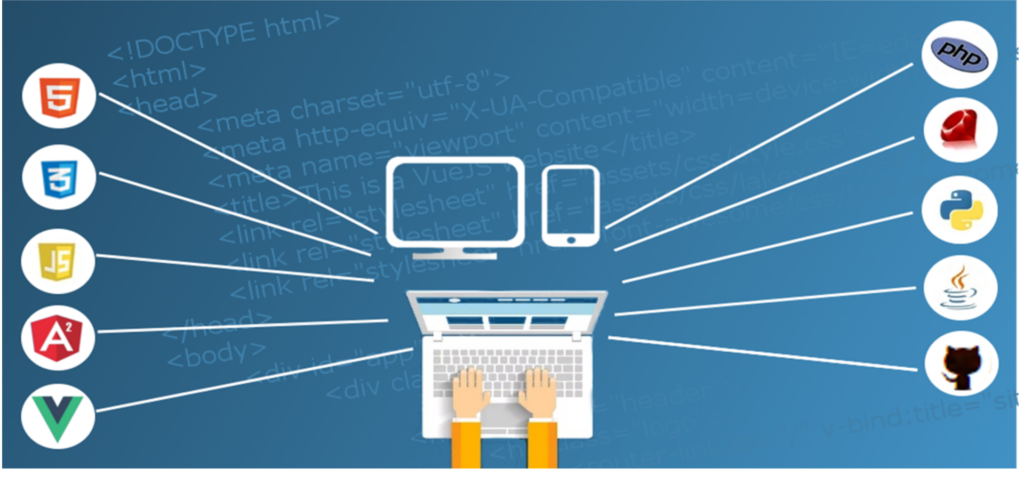Our interconnected digital age has ushered in an era where the right technology stack can be the differentiator between a successful project and an unfruitful one. The collective choice of tools, languages, and frameworks formulates this stack. Let’s journey through its multifaceted landscape.
Introduction to the Tech Stack
Imagine building a house. The technology stack is akin to the blueprint, materials, and tools you select. It comprises layers of software that interact to form web or mobile applications. Each layer holds a specific role, and together, they form a cohesive unit.
Importance of Choosing the Right Stack
Selecting an appropriate tech stack is like pairing the right wine with a dish. The outcomes include:
- Performance Optimization: Speed and responsiveness matter.
- Cost Efficiency: Right tools can save both time and money.
- Scalability: Growing without hitches is pivotal.
- Maintenance: Future changes should be hassle-free.
Web Development
Websites and web apps are our window to the digital realm.
Frontend
It’s all about user experience here.
React’s Evolution: Introduced by Facebook, React has transformed the frontend landscape. Its virtual DOM ensures efficient updates, while hooks offer enhanced functionality without classes.
Role of CSS Preprocessors: Tools like SASS and LESS simplify CSS, making it more maintainable and structured.
Backend
This is where the magic happens in the shadows.
Node.js and Scalability: An event-driven architecture means Node.js can handle many connections simultaneously, making it highly scalable.
The Power of Express.js: This minimalistic framework for Node.js accelerates the development of web applications with essential web server features.
Mobile Development
Android
Kotlin’s Advantages: Kotlin has rejuvenated Android development. Its null safety and conciseness reduce bugs, and interoperability with Java ensures a smooth transition.
iOS
Swift’s Performance Boost: Swift’s strong typing and error handling lead to fewer crashes. It also compiles directly to native code, ensuring optimal performance.
Artificial Intelligence
Machine Learning
Python Libraries
: TensorFlow and PyTorch offer extensive functionalities for building and training machine learning models.
Neural Networks
Deep Learning in Action: Neural networks, especially deep ones, mimic the human brain’s structure. They’re pivotal for tasks like image and voice recognition.
No and Low Code Development
These platforms are game-changers, allowing rapid deployment of applications without deep coding expertise. Platforms like OutSystems or Appian enable businesses to innovate faster.
Database Systems
SQL
PostgreSQL vs MySQL: While both are giants in the relational database domain, PostgreSQL offers more advanced features, whereas MySQL is renowned for its reliability.
NoSQL
MongoDB’s Flexibility: Being document-oriented, MongoDB allows varied data storage formats, making it adaptable and scalable.
DevOps & Cloud Technologies
AWS
AWS Services Spectrum: From computing power with EC2 to storage solutions with S3, AWS’s plethora of services caters to diverse needs.
Github
Git’s Revolution in Collaboration: Github, built on Git, has transformed how developers collaborate, making version control and code sharing seamless.
Monitoring & Analytics
Mouseflow
Deep Dive into Heatmaps: Mouseflow’s heatmaps reveal user behavior patterns, providing insights into webpage effectiveness.
LogRocket
Tracking Frontend Anomalies: LogRocket captures bugs in real-time, ensuring swift frontend debugging.
Authenticating & Authorizing
JWT
JWT’s Security Layers: JWT offers stateless authentication, ensuring data integrity and security during transmission.
Modern Frameworks & Libraries
React
The Future with React 18: With concurrent features, React 18 promises smoother user experiences and better rendering.
Node.js & Express.js
The MERN Stack Potential: Combining MongoDB, Express.js, React, and Node.js, the MERN stack offers a full-stack JavaScript solution for modern applications.
Languages of the Future
Python
Python in Diverse Applications: Python’s syntax simplicity coupled with its extensive libraries makes it a top choice for web development, data science, and AI.
TypeScript
Beyond Regular JavaScript: TypeScript adds static typing to JavaScript, offering better tooling and reducing runtime errors.
Concluding Thoughts
As technology evolves, so does the stack. While the tools and languages highlighted are prominent now, it’s essential to stay adaptive and updated. The future promises more integrations, smarter solutions, and unprecedented innovations.
FAQs
1. What is a technology stack?
– It’s a combination of tools, frameworks, and languages used to develop a digital product.
2. Why is React popular for frontend?
– React’s component-based architecture, virtual DOM, and efficient updates make it a top choice.
3. How does AI tie into the tech stack?
– AI, especially machine learning and neural networks, requires specific libraries and platforms for effective implementation.
4. What’s the significance of No and Low Code platforms?
– They allow rapid application deployment without deep coding expertise, accelerating innovation.
5. Why is choosing the right database essential?
– Databases form the core of data storage and retrieval. The right choice can impact performance, scalability, and maintenance.

